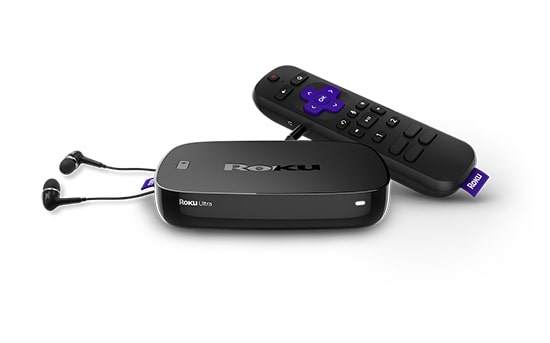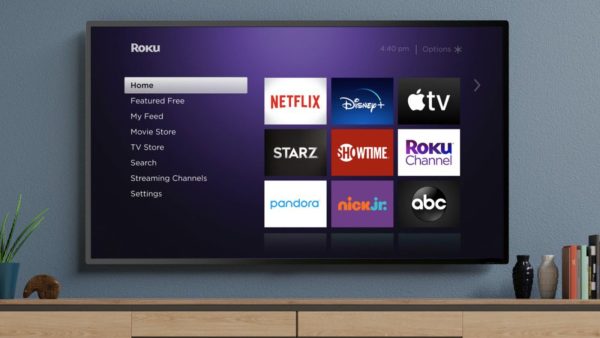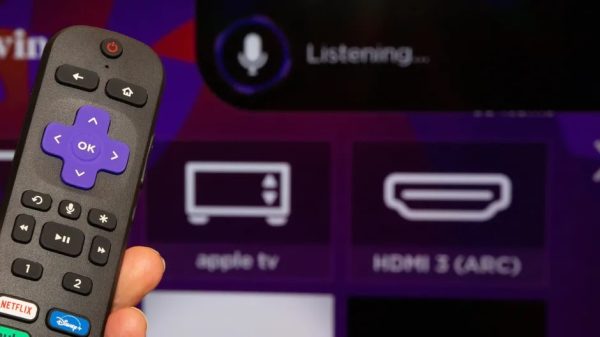What Is Roku?
Roku is a streaming service that allows you to access streaming content from a large selection of internet-based content through your television. The service essentially turns your regular TV into a smart TV by bringing together a bevy of subscription-based channels through a single application. Aside from the ability to view content online, Roku also allows you to view content via external devices such as flash drives or network-attached storage devices. Roku offers a selection of hardware devices known as “streaming sticks” that attach to your television as part of their service. The streaming stick gives you access to the Roku app, which contains thousands of streaming apps for you to choose from. In addition to the selection of external streaming channels, Roku has its own channel, which is freely accessible to all subscribers. The app consolidates content from multiple channels, allowing you to search for, stream, and get notifications for different types of content. The streaming stick is also usually accompanied by a remote control that allows you to select channels and personalize your streaming experience. Unlike most streaming channels that most people are familiar with, Roku has an entirely different objective. That objective is to provide users access to content from multiple channels via a single access point. They also offer different types of streaming devices to fit the needs of different types of consumers. Check out this guide on choosing the best Roku devices to stream your favorite content.
When Do You Need to Connect Roku to Wi-Fi?
Connecting to the internet is usually a simple process on Roku. It can be a lot easier when you have already saved your network details and password into the device beforehand. If you are connecting to the network for the first time, the system will ask for the password and remember it for future reference. Either way, connecting to a new or existing network doesn’t happen automatically on Roku. Most devices automatically connect to a network that it recognizes, especially when you’ve saved the password for that network. Roku, on the other hand, equires you to scan for and select a network each time you want to access the internet. In either case, you will need to have a physical remote or a digital remote in order to navigate the Roku app. This is why the remote is so important and why you want to know how to access the internet without it.
How to Connect Roku to Wi-Fi
As we’ve mentioned, there are circumstances in which you need to connect to a new network but don’t have access to your remote. As unfortunate as that scenario may appear, there are a handful of methods that come with learning how to connect Roku to Wi-Fi without a remote. Here are the different methods you can try:
1. Use the Roku Mobile App
The easiest way to connect to a network without a remote is to download the Roku mobile app. The mobile app contains the exact same buttons and functions as the physical remote. The only exception is that it runs on a touchscreen interface. However, note that your Roku device must be searchable over the network. Otherwise, you will need to use a physical remote to control the device. With this in mind, you can download the Roku app for Android (via Google Play) and iOS devices (via Apple Store).
Connect Roku to Wi-Fi Using the Roku Mobile App:
2. Use the Roku Chrome App Extension
Another option on how to connect Roku to Wi-Fi without a remote is by using a browser-based extension called Remoku. Remoku comes with remote-like features that allow you to control your Roku setup through your computer. However, the extension only works with either Google Chrome or Microsoft Edge. Like the Roku mobile app, your Roku needs to be connected to the internet beforehand. The steps are also divided into pairing the extension with your Roku and connecting your Roku to the internet. Here are the steps:
Pair Remoku extension with Roku device:
Connect Roku to Wi-Fi Using Remoku Extension
3. Connect Roku Directly to the Router
Take note that to be able to connect Roku to a router, you will need either the mobile app or browser extension to serve as a remote replacement. In addition, you will need to make sure that both your Roku device and application are on the same network. One way to go about this is to establish a direct connection by plugging your Roku device into your router via an Ethernet cable. It’s one of the lesser-known but more effective ways to increase your internet speed, though you can only do so one device at a time. However, we need to note that a wired connection is only possible through select Roku devices. Specifically, only Roku devices with Ethernet ports are capable of running wired connections. In order to confirm whether your device can connect through a wired connection, all you have to do is to look at the back of the device for a port called Ethernet. If you’ve confirmed that your device has an Ethernet, you can use any type of Ethernet to connect it to your router. If you have a Roku TV, it should have an Ethernet port somewhere at the back. The Roku Streambar also comes with Ethernet connectivity, though you would need an external USB Ethernet adapter to connect it.
Connect your Roku device to Wi-Fi via Ethernet
Connecting your Roku device to your router via Ethernet cable is only the first step, as you will also need to use the Roku mobile app to control the device and get it connected to your network. Here are the steps:
4. Set a Mobile Device as a Hotspot
Newer versions of Roku entirely depend on wireless connections. For these devices, a direct connection to the router may not work. There is another workaround to this problem. However, this particular solution will depend on whether you know the old network that your Roku was connected to. If, by some chance, you know the details of your old Wi-Fi network (Wi-Fi name and password), you can trick your Roku device into thinking that it’s connecting to the old network. This is possible by setting up one mobile device as a Wi-Fi hotspot for your Roku. At the same time, you can set up another device as the landing point for your Roku mobile app.
Connect the Roku device to Wi-Fi by using a mobile hotspot
5. Borrow a Roku Remote
Suppose your Roku device is not connected to the internet or discoverable through the network. In that case, using the Roku app or Remoku extension may not work since the apps will not detect your Roku device. A potential solution would be to borrow a Roku remote simply for the purpose of connecting your Roku to your wireless network. After your Roku device connects to the network, you can already use your Roku app as a replacement for the remote. However, you will need to pair the remote temporarily with your Roku device before you can use it to connect your Roku to a wireless network. Note that you don’t need to purchase an entirely new Roku remote for this purpose. Although you can do so to replace your old remote.
Connect Roku to Wi-Fi Using Borrowed Remote
Final Thoughts on How to Connect Roku to Wi-Fi Without a Remote
While a physical remote is still the best way to control a Roku device, there’s always a small chance of misplacing or losing the remote. Luckily, Roku made sure to provide its users with alternative options to be able to access their Roku devices. With the help of a mobile phone or laptop, you can easily replace your physical remote with a digital one. However, these options will only work if your Roku device is discoverable on the network. Your device needs to “pair” with Roku first before it can serve as a replacement for your remote. Having said this, if the steps mentioned above do not work, Roku does offer customer support via chat or email. On the other hand, you may know how to connect Roku to Wi-Fi without a remote and accomplish the task, yet be unable to access specific apps like YouTube. If you’re experiencing issues with specific apps within Roku, then the problem most likely relates to the app itself. With this in mind, you may want to read this guide on accessing YouTube on Roku when it’s not working.







